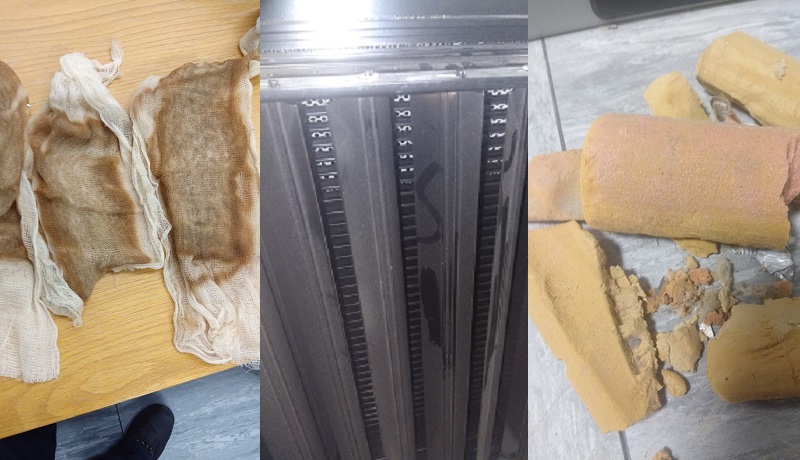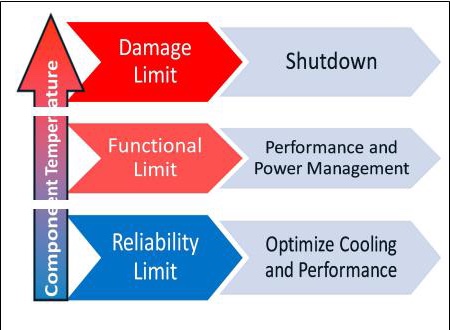To protect the system, steps are taken to ensure IT equipment is operated from purpose-built computer rooms, or data centres (critical environments) either at the companies premises or at a colocated data centre. These rooms are the heart of most organisations and have systems in place to ensure the uninterrupted use of the equipment is guaranteed.
For example, the provision of uninterrupted power is essential, as is fire suppression and cool air. The ever-improving performance of IT equipment being achieved mostly by decreasing the size of the electrical components, has made the control of airborne particulate contamination inside these critical environments just as important as any other control measures.
The effects of airborne particulate contamination range from unexpected catastrophic equipment failure, to the requirement for increased cooling and power. Original equipment manufacturers (OEMs), are starting to issue instructions on the cleanliness requirements for the operating environment of their equipment. This implies, that if the equipment is not kept like this, warranties could be void.
Airborne particulate matter
If it is agreed that airborne particulate is a problem within data centres, then a number of questions must be considered, before technical cleaning as part of the data centres quality control processes is discussed.
Where is the particulate matter (PM) within the data centre/hall coming from? There are two main sources of particulate matter contamination within a data centre/halls.
Firstly, externally to the data centre/hall. This particulate matter has come into the data centre/hall from outside. There are a number of ways outdoor PM gets into a data centre.
If economisers are in use then an analysis of the outside environment should also be conducted
The most recent way is due to the advent of economised air cooling systems or what is called free air. This system can save power during use, against enclosed CRAC systems. Most of these systems use M6 or G4 filters which filter air at 1.0 µm to 10.0 µm, these are recognised for controlling 5.0 µm PM. Leaving PM smaller than this, free entry to the data hall.
PM can enter via doors especially if they are left open. In physics hot moves to cold, the second law of thermodynamics. If a door is left open the warmer air in the corridor can move into the cooler data hall, this warm air is laden with dust. Dust can be brought into the data hall on equipment. Also, standard ventilation systems, can allow PM in. Then we have human activity, lots of clothing shed PM as people move, human skin sheds lots of PM every day.
Internal to the data hall. This is dust created in the data hall. There are lots of moving parts in a data hall. The main example would be the drive belts on the CRAC downflow units, these are moving at high speed 24/7 inside the data hall. These are often made of neoprene, they wear and particulate matter is shed by them.

Left: These tack wipes show dust that was found on plastic composite walls, the data hall has Free Air
Middle: Dust visible on Air Tile. This data hall has enclosed AC, the dust when wiped was black
Right: Phenolic foam insulation left under an AC unit, in the air flow, this contaminated 25 racks of equipment with yellow dust, which had entered the servers and switches
Regardless of the source of the airborne particulate matter, once it is in the Data Hall, many forces work upon it, including airflow, conduction, Van De Waals force, static, Brownian motion and least of all gravity. Items fall to earth under Gravity as follows: mass x 9.89 m/s2 the individual particles have little mass, so the effect of gravity on them is negligible. The PM can eventually find its way into the IT equipment, potentially causing many problems.
The effects PM has on IT equipment, will depend on the type of PM and can be outlined under 4 headings.
Mechanical effects: This includes obstruction of airways (overheating), interference of moving parts, abrasion, optical interference, interconnection interference and deformation of surfaces (magnetic media). During data room refurbishments equipment is often contaminated with plaster dust which is very abrasive, and can insulate component parts on the PCB, increase the heat generation issues.
Electrical effects of PM: these include impedance changes, and electronic circuit conductor bridging. Conductive PM like Zinc can cause this.
Chemical effects: Dust settled on a printed circuit board (PCB) can lead in certain circumstance (depending on the dust) to component corrosion (copper creep) and electrical short circuiting.
Absorption of moisture: particulate matter with a deliquescence relative humidity (DRH) higher than the data hall, like plaster dust, can absorb moisture from the data room, causing the dust to become damp. Which will cause chemical problems (as above) electrical problems, it is now conductive and has increased abrasion (mechanical). Lots of this type of dust can even reduce the humidity in the room which increases static issues.
As seen from above, the control of PM within a data hall is an important factor, that requires consideration from the owners of the data hall, equipment and any parties which are relying on the equipment to perform, to ensure their companies mission is a success.
Controlling contamination
The control of particulate matter within a data centre require a number of issues to be considered. An assessment of the indoor PM contamination, this should include what the PM is and where it may have come from. This may require samples being taken and laboratory analysis undertaken. The lab analysis should give you an idea of the biggest source of the contamination.
If for example this is neoprene then the PM is from the ACU drive belts. This issue can then be address with the ACU service supplier and or belt manufacturer. Likewise if other contaminants are found systems or processes should be put in place to control these. Which may include technical cleaning.

If economisers are in use then an analysis of the outside environment should also be conducted. This will enable the data centre management to determine where the PM is coming from and what is the source. For example, a data centre using economised air, was being contaminated by a very fine grey dust. On analysis, this was found to be mainly silicon dioxide SiO2, or silicate. Silicate is the main ingredient of concrete. On analysis of the outside environment, the date centre was 800 m west of a concrete plant, also leaves on trees were showing signs of a very fine grey dust. The assumption, the prevailing wind was west, so PM from the concrete plant was finding its way into the data centre via the free air system. Obviously, discussions with the concrete plant re dust suppression would then be done. Again systems and process should be put in place in line with any finding and this could include technical cleaning. Once the analysis have been conducted the data centre management team can determine how best to control the PM contamination within the data centre. Be this by physical changes, adaptions or technical cleaning.
Technical cleaning as part of controlling particulate matter
The technical cleaning of data centres has become a recognised way of controlling PM within a data centre/hall. The current best practice specification for this cleaning is as follows. The data hall should be cleaned to ISO 14644-1 2015 Class 8, plus all accessible surfaces free from dust.
Moving parts made of neoprene wear and particulate matter is shed by them
This specification gives controls for both airborne and settled PM, and gives the data centre management a specification that can be tested and proven. It also give clear instruction to the technical cleaners as to what is required for the cleaning of the Data Hall.
The technical cleaning company need to consider a few things:
Airborne particulate levels: These need to be in line with ISO 14644-1 2015 Class 8. This will require control of airborne particles during the cleaning process. As during the mechanical process of cleaning, vacuuming, wiping etc. settled PM will once again become airborne.
Removal of PM from all accessible surfaces: This will require correct tools, processes and systems for removing PM from all accessible surfaces. An accessible surface can be determined by the data centre management and the cleaners prior to commencement of the cleaning.
Testing: After the cleaning the data hall must be tested for both airborne and settled particulate matter. Airborne particulate matter should be tested to ISO 14644-3. Using a calibrated air particulate reader, taking the required number of samples across the data hall. This data is then processed into a certificate/report to show pass or fail. Settled particulate matter should be tested using what in military terms is known as the glove test. Any dust found on any accessible surface is a fail. This test should be conducted by the data centre management team.
Reporting: A validation certificate and report for the cleaning should be produced, using the data from the ISO 14644-3 test and the result of the glove test, along with any observations, for example water leaking from ACU2. This can then be presented to the data centre management team. This is an invaluable document for internal and external audits and for showing users and potential clients (colo), that the data hall has reach the required specification for that year. This document helps all concerned to be confident, that the equipment is being protected from particulate matter ingress and potential damage.
It seems particulate matter from whatever source will be present in the controlled area of the data centre/hall. These environments are not built as clean rooms, so this is inevitable.
Technical cleaning and testing to ISO 14644-1 2015 Class 8 is an invaluable tool to combat particulate matter within data centre/halls and any other environment where IT equipment is housed. Indeed a number of large data centres have the cleaning regime within their standard operating procedures. Also specifiers are specifying technical cleaning and validation for data centres/halls/rooms prior to hand over from the contractor to the client. Whilst cleaning and testing to ISO 14644-1 Class 8, is an invaluable tool for controlling and reporting levels of particulate matter, within a data centre/hall. It should not be relayed on completely.
Environmental issues both within and external to the data centre/hall should be considered and changes in design, equipment and processes should be implemented. For example, no cardboard policy, as cardboard can add high levels of particulate to the room. Also maintenance of equipment like ACU should be maintained. General maintenance like plumbing and electrical works should be kept as clean as possible.
